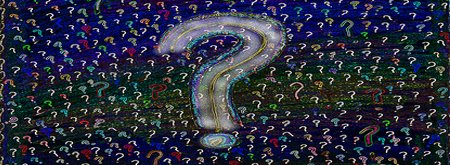The God Who Wasn't There
Throughout the DVD, Price, Carrier, and Doherty are preoccupied with parallels, seeing them everywhere. Most scholars have abandoned the religionsgeschichtliche or what was known as the “history of religions” school that regarded parallels as conclusive signs that Christianity was cut from the same cloth as ancient myth. Further research has revealed that many of the parallels to which they refer postdate the Gospels. Thus, it is most likely that those parallels were the result of other religions who copied the Christian story rather than the other way around. Second, no examples cited exhibit all of the points we find in the Gospels. Hence, a number of the parallel accounts must be combined in order to mirror Jesus. Third, no miracle-worker per se existed within two hundred years on either side of Jesus. [49] Fourth, many of the parallels cited are weak. Fifth, parallels can be seen in just about anything. In less than an hour, I was able to put together two lists of parallels more numerous and exhibiting a closer similarity than those listed by Price, Carrier, and Doherty. Consider the following parallels between ancient Rome and the U.S.:
- Both nations were founded by rebelling against ruling nations.
- The peoples of the ruling nations began with an “E” (Etruscans, Englanders).
- Both Rome and the U.S. went to war with them...
- ...and won.
- Both had an early and very prominent leader who was a male (Julius Caesar, George Washington),...
- ...each of whom were generals.
- Both of these leaders crossed a river with their armies (Rubicon, Delaware)...
- ...before being victorious.
- Both were beloved by the people they ruled.
- Both nations employed a Senate that had great power.
- Both Senates forced one of its later leaders to step down from power.
- Both of whose names began with the letter “N” (Nero, Nixon).
- Both nations allowed their citizens to vote.
- Both nations had capital punishment.
It would not take much effort to create a document filled with these parallels. Perhaps a thousand years from now someone will claim that a bulk of U.S. history was created to parallel the Roman Empire. But they would be grossly mistaken. One can likewise see striking parallels between the lives of Jesus and John F. Kennedy.
- Both had followers who adored them.
- Both were leaders of a kingdom.
- Both were opposed.
- Both were killed publicly...
- ...in a dramatic fashion...
- ...at the pinnacle of their careers...
- ...in the presence of the woman closest to them.
- Both received head wounds. A crown of thorns was placed on the head of Jesus. JFK was shot in the head.
- Both were pronounced dead by authorities (soldier, physician).
- Both were mourned.
- Both were buried in a tomb.
- Both had names beginning with the letter “J.”
- Both were interested in freedom.
- Both had a father named Joseph...
- ...who was self-employed.
- Both families had a prominent and immediate member who provided wine.
- Both Jesus and JFK had brothers who were murdered...
- ...after their prominent brothers were murdered (James, RFK).
Here are eighteen parallels between Jesus and JFK that are more striking than those cited by Carrier. Some even seem too bizarre to be mere coincidence. Nevertheless, the entire comparison is true and no would conclude that it is too much to be a coincidence. Neither are we compelled to conclude that JFK was a myth, invented to embody Christian ideology in the 20th-century!
Consider the following often-cited parallels between Lincoln and Kennedy:
- Abraham Lincoln was elected to Congress in 1846. John F. Kennedy was elected to Congress in 1946.
- Abraham Lincoln was elected President in 1860. John F. Kennedy was elected President in 1960.
- The names Lincoln and Kennedy each contain seven letters.
- Both of their wives lost their children while living in the White House.
- Both Presidents were shot on a Friday.
- Both were shot in the head.
- Both were assassinated by Southerners.
- Both were succeeded by Southerners.
- Both successors were named Johnson.
- Andrew Johnson, who succeeded Lincoln, was born in 1808. Lyndon Johnson, who succeeded Kennedy, was born in 1908.
- John Wilkes Booth was born in 1839. Lee Harvey Oswald was born in 1939.
- Both assassins were known by their three names.
- Both names are comprised of fifteen letters.
- Booth ran from the theater and was caught in a warehouse. Oswald ran from a warehouse and was caught in a theater.
- Booth and Oswald were assassinated before their trials.
- Before Lincoln was assassinated, he visited Monroe, Maryland.
- Before Kennedy was assassinated, he visited Marilyn Monroe.
Barbara and David Mikkelson of Snopes.com, whom Flemming interviews in his video, explain on their web site that these “coincidences are easily explained as the simple product of mere chance. It's not difficult to find patterns and similarities between any two marginally-related sets of data” [italics mine].
One can begin to understand why parallels have not persuaded the majority of today’s scholars. It is not that parallels could not expose Christianity as a myth. On the contrary, if a number of religions contemporary with Christianity (and especially if they preceded it) had clear reports of their leaders experiencing a phenomenal birth, being miracle workers and exorcists, providing similar teachings, dying by crucifixion, and rising from the dead, we may have to give serious consideration to these parallels. However, such parallels are imaginary. They exist only in the minds of Jesus mythers.
Robert Price contends otherwise. He says that the idea that the son of a high God came down to earth happened many times in antiquity.
Alexander the Great, Augustus, and others were said to have been conceived miraculously; if not via a virgin birth, the husband was not involved. Then there is the child prodigy story, ancient and modern, where the child is a god and already knows everything. Asclepius was a major healer and Apollonius of Tyana did a lot of exorcisms.
Price appeals to Dennis MacDonald who suggests that Jesus’ ‘messianic secret’ could be taken from the Odyssy when Odysseus comes home and tells everyone to keep it quiet.
Reversals as noted by Dundes where they hail Jesus on Palm Sunday then turn on him. The persecution of an infant by a tyrant is seen with Caesar Augustus, Moses, Krishna, Zoroaster. The Passion is like other stories of dying and rising gods. Standing before the authorities is like the story of Apollonius who stands before the emperor Domitian and miraculously gets out of it. Romulus disappears in battle and then reappears again as a god. Apollonius appears in a doubting Thomas story. Apollonius appears to him, though no one else sees him.
I have addressed MacDonald earlier.[50] The story of Apollonius is interesting. But it is far from convincing. For Apollonius is thought to have died at the close of the first-century. The only account we have of him was written by Philostratus 120 years after his death and more than 200 years after the death of Jesus. Many believe that it was written in answer to Christianity. It is written in the genre of a romantic novel rather than biography. The story ends with the death of Apollonius. Then Philostratus adds a section he calls “stories.” The story which a few like Price call a ‘resurrection’ is found in a single report of an appearance in a vision to a sleeping man that occurred 175 years after the death of Apollonius! And it isn’t even a bodily appearance. So, it cannot be called a resurrection, which involved the corpse. Moreover, the report came from a man whose birthplace was supposedly Nineveh – a city that had not existed for 300 years! When we consider that Apollonius is normally showcased as the chief parallel in the case for the mythic Jesus, we see how weak the case actually is.
Price continues that “[t]here are other similar savior figures in the same neighborhood at the same time in history: Mithras, Attis, Adonis, Osiris, Tamuz, and so forth and nobody thinks that these characters are anything but mythical and their stories are so similar, most of them in fact having some kind of resurrection or other, sometimes even with celebrations after three days and so forth that it just seems like special pleading to say ‘Oh, well, in this one case it really happened.’” At this point a quote from Justin Martyr appears that reads, “When we say that Jesus Christ was produced without sexual union, was crucified and died, and rose again, and ascended to heaven, we propound nothing new or different from what you believe regarding those whom you call the sons of Jupiter.”
The screen then says, "Some Attributes of Previous Saviors: born of a virgin on December 25; Stars Appeared at Their Birth; Visited by Magi from the East; Turned Water into Wine; Healed the Sick; Cast out Demons; Performed Miracles; Transfigured Before Followers; Rode Donkeys into the City; Betrayed for 30 Pieces of Silver; Celebrated Communal Meal with Bread and Wine; Which Represented the Savior’s Flesh and Blood; Killed on a Cross or Tree; Descended into Hell; Resurrected on Third Day; Ascended into Heaven; To Forever Sit beside Father God And Become Divine Judge.”
No evidence is provided to show that these stories have a dating any earlier than 100 years after Jesus. No other savior stories contain all of the examples provided. Some of the points are dubious. For example, regarding crucified saviors, even the hyperskeptics of Infidels.org, several of whom appear in this video, have made the following comments:
Note: the scholarship of Kersey Graves has been questioned by numerous theists and nontheists alike; the inclusion of his The World's Sixteen Crucified Saviors in the Secular Web's Historical Library does not constitute endorsement by Internet Infidels, Inc. This document was included for historical purposes; readers should be extremely cautious in trusting anything in this book.[51]
The World's Sixteen Crucified Saviors: Or Christianity Before Christ is unreliable, but no comprehensive critique exists. Most scholars immediately recognize many of his findings as unsupported and dismiss Graves as useless.... In general, even when the evidence is real, it often only appears many years after Christianity began, and thus might be evidence of diffusion in the other direction. Another typical problem is that Graves draws far too much from what often amounts to rather vague evidence. In general, there are ten kinds of problems that crop up in Graves' work here and there...[52]
Notwithstanding, Flemming just drops the parallel on his viewers without support or caveat.
Doherty speaks of would-be messiahs and miracle workers “that plagued Palestine throughout the first-century.” But there is a major problem with Doherty’s statement: Other than Jesus, there were no messiahs or miracle workers in the first-century. Raymond Brown writes, “One encounters the affirmation that there were many would-be messiahs in Palestine at this time. In fact there is no evidence that any Jew claimed or was said to be the Messiah before Jesus of Nazareth (or until a century after his death).”[53] Graham Twelftree, who is regarded by many to be the foremost authority on the miracles of Jesus, writes, “In the period of two hundred years on each side of the life of the historical Jesus the number of miracle stories attached to any historical figure is astonishingly small.”[54] To be certain, there are figures who may perform a single miracle or two during their lifetime. But there are no workers of multiple miracles within that 400-year period. Citing Werner Kahl’s research, Twelftree states that:
of approximately 150 miracle stories from antiquity that we know of, only one other case in the entire miracle story tradition before Philostratus’ Life of Apollonius (written after A.D. 217) of an immanent bearer of numinous or preternatural power (and then in only a singular version of his miracle) – Melampous, according to Diodorus of Sicily (writing c. 60–30 B.C.).[55]
Doherty is, therefore, grossly mistaken in his assertion.
Regarding resurrections, there are no clear parallels of a resurrection that predate Christianity. One may cite the account of Aristeas as a possible parallel. But the differences involved make it look little like what we see with Jesus. The first clear parallel does not appear until long after the life of Jesus, probably Adonis around AD 150. If imitation is occurring, it appears that it is pagans who are imitating the Christian accounts.
The statement by Justin is interesting. But when we note the weakness of the parallels Justin cites, and the context of his writing, which is to address the specific problem of Christian persecution, then his comments on parallels present no historical difficulty whatsoever. In our book The Case for the Resurrection of Jesus, Gary Habermas and I write,
... since the details of the stories are vague and unlike Jesus’ resurrection, today’s scholars would not regard the stories as parallels. Justin mentions the deaths and risings of the sons of Jupiter: Aesculapius was struck by lightning and ascended to heaven; after dying violent deaths, Baccus, Hercules, and a few other sons rose to heaven on the horse Pegasus. Justin then mentions Ariadne and others like her, though unnamed, who “have been declared to be set among the stars.” Finally, he mentions the account of the cremation of the Roman emperor Augustus, during which someone swore that he saw Augustus’ spirit in the flames ascend toward heaven. [56]
Consider the context in which Justin writes. His First Apology was written to the Roman emperor entreating him to investigate the false charges of impiety and wickedness made against Christians. In chapter 11, he says Christians are not a threat to Rome because they are not looking for a human kingdom. In fact, Jesus taught civil obedience (ch. 17). Jesus taught a higher level of morality than other religions. For example, not only our works but even our thoughts are open to God (ch. 15). Christians are taught to love their enemies and pray for them (chs. 7–8). In chapter 20 Justin contends that many Christian teachings reflect the teachings of those whom the emperor honors. Accordingly, if on some points Christians teach the same things and on other points present an even higher morality, “and if we alone afford proof of what we assert, why are we unjustly hated more than all others?” Justin’s objective is to demonstrate to the emperor that Christianity has a lot in common with other religions that enjoy Rome’s approval. Therefore, the persecution of Christians should cease.[57] These comments by Justin fail to support Price’s contention that Justin recognized the problem of parallels. To the contrary, he attempted to make parallels by straining his examples in order to stop the persecution of Christians.
Price provides another argument in support of his point, a portion of which is not as easily answered. He says,
The early Church fathers understood [parallels] as a problem because they were already getting the same objections from pagans. They said, “What you say about Jesus we’ve been saying about Dionysus and Hercules all the time.” What's the big deal? I mean they didn't believe in them either anymore. And so the Christian apologists the defenders of the faith would say, “Well, yea, but this one is true. And you see Satan counterfeited it in advance because he knew this day would come.” Boy, I'll tell you that tells you two things right there that even they didn't even deny that these other Jesus like characters were before Jesus or they never would have resorted to something like that Satan knew it would happen and counterfeit it in advance?
The passage to which Price refers comes from Justin’s Dialogue with Trypho (70):
“Be well assured, then, Trypho,” I continued, “that I am established in the knowledge of and faith in the Scriptures by those counterfeits which he who is called the devil is said to have performed among the Greeks; just as some were wrought by the Magi in Egypt, and others by the false prophets in Elijah’s days. For when they tell that Bacchus, son of Jupiter, was begotten by [Jupiter’s] intercourse with Semele, and that he was the discoverer of the vine; and when they relate, that being torn in pieces, and having died, he rose again, and ascended to heaven; and when they introduce wine into his mysteries, do I not perceive that [the devil] has imitated the prophecy announced by the patriarch Jacob, and recorded by Moses? And when they tell that Hercules was strong, and travelled over all the world, and was begotten by Jove of Alcmene, and ascended to heaven when he died, do I not perceive that the Scripture which speaks of Christ, ‘strong as a giant to run his race,’[58] has been in like manner imitated? And when he [the devil] brings forward Aesculapius as the raiser of the dead and healer of all diseases, may I not say that in this matter likewise he has imitated the prophecies about Christ?[59]
We may first note that the parallels cited by Justin are weak:
Jupiter’s son Bacchus was the result of Jupiter’s sexual intercourse with Semele. The story is that Jupiter (i.e., Zeus) cheated on his wife by having sex with Semele who is later destroyed.
Bacchus was torn in pieces, died, rose again, and ascended to heaven. The rising and ascending to heaven does not resemble what happened to Jesus. Bacchus was escorted to heaven on the horse Pegasus. There was probably the beginning of a disembodied existence for Bacchus, since this is the type of post-mortem existence that was believed by pagans. There is no indication that a resurrection of the body was being described.
Wine was involved in the Jupiter cult. But what about a parallel with Jacob as recorded by Moses? I could only find a few references to which Price could refer, none of which come close to being a parallel.[60]
Hercules, another son of Jupiter, was strong, traveled the world, died, and ascended to heaven on the horse Pegasus. Again, the parallels with Jesus are very weak. Justin notes a parallel with Jesus in Psalm 19:5: “Which is as a bridegroom coming out of his chamber; It rejoices as a strong man to run his course.” Justin has to strain hard to get a parallel from this. For Psalm 19 is not speaking of Jesus.
The heavens are telling of the glory of God;
And their expanse is declaring the work of His hands.
Day to day pours forth speech,
And night to night reveals knowledge.
There is no speech, nor are there words;
Their voice is not heard.
Their line has gone out through all the earth,
And their utterances to the end of the world.
In them He has placed a tent for the sun,
Which is as a bridegroom coming out of his chamber;
It rejoices as a strong man to run his course.
Its rising is from one end of the heavens,
And its circuit to the other end of them;
And there is nothing hidden from its heat. (Psalm 19:1-6; NASB)
The psalmist David is writing poetically that the sky speaks of God’s glory. God has made the sky a tent for the sun, which is glorious, runs a course from one end of the sky to the other and impacts everyone. This is not a parallel to Jesus by any reasonable assessment.
Who was Aesculapius, “raiser of the dead and healer of all diseases”? He was believed to be the son of Apollo who had great skills in practicing medicine. His first teacher was a centaur named Chiron. He became so skilled that he could raise the dead. Hades, the god of the dead, became so concerned over this that he had Aesculapius killed with a lightening bolt. This story occurs in the foggy past with no marks of historicity. Is there a historical core of a man who was a skilled practitioner of medicine whose life was cut short when he was struck by lightening? We may never know. But this is hardly a strong parallel to Jesus. This example cited by Price is very poor.
Carrier says that many aspects of the story of Jesus’ appearance to the Emmaeus disciples is almost an exact inversion of the Romulus story, the founding myth of Rome. Romulus was a god who became a man and was torn apart (executed) by the Senate, rose from the dead and appeared to his friend Proculus on the road to Albalonga from Rome. He says that it seems like Luke got this story from someone telling the Romulus story but placing Jesus in his place. Instead of a worldly empire, he’s preaching a kingdom of God. The problem with Carrier’s thesis is that the story of the appearance of Romulus was not a resurrection. There are significant differences of what occurred. For example, another story is that Romulus disappeared in battle then reappeared at a later date. There is no ambiguity in the story that he has returned from the afterlife. But is this a resurrection? I am not attempting to split hairs. ‘Resurrection’ meant that the corpse that had died was returned to life and transformed into an immortal body. If we view every story of a post-mortem appearance as a parallel to Jesus, then we have to include every ghost story and grief hallucination, from past to present.
All of this eliminates the claim that the early Christian reports of Jesus’ resurrection were cut from the same cloth as other stories of the period. Why? Because stories of post-mortem appearances are not limited to the Greco-Roman era. They have never stopped and continue today. If one of my sisters claimed that our dead grandfather appeared to her last night, I would not consider that as a parallel to the resurrection reports of Jesus. That there is a similarity cannot be denied. But is the similarity enough to demonstrate that resurrection reports and grief hallucinations and dreams are cut from the same cloth? And when one has to postulate inversions and alterations in order to hide the parallel, as MacDonald does, the impressiveness of purported examples declines even further. We are not surprised to find that the large majority of today’s scholars do not use alleged parallels as a reason for rejecting the ancient reports of the resurrection of Jesus.
References
[49] Graham H. Twelftree, Jesus: The Miracle Worker (Downers Grove: InterVarsity, 1999), 247.
[50] See note 15 above.
[51] http://www.infidels.org/library/historical/kersey_graves/16/preface.html.
[52] http://www.infidels.org/library/modern/richard_carrier/graves.html.
[53] Raymond E. Brown, An Introduction to the New Testament (New York: Doubleday, 1997), 820n6.
[54] Twelftree, 247.
[55] Twelftree, 247.
[56] Gary R. Habermas and Michael R. Licona, The Case for the Resurrection of Jesus (Grand Rapids: Kregel, 2004), 90.
[57] See Habermas and Licona (2004), 296n18.
[58] Psalm 19:5.
[59] Roberts, A., Donaldson, J., & Coxe, A. C. 1997. The Ante-Nicene Fathers Vol.I : Translations of the writings of the Fathers down to A.D. 325. The apostolic fathers with Justin Martyr and Irenaeus. Logos Research Systems: Oak Harbor.
[60] Genesis 27:25-28; Deuteronomy 33:28.
© 2005 Mike Licona
Used on bethinking.org by the kind permission of Mike Licona.
Other resources by Mike Licona are available from his website risenjesus.com.



